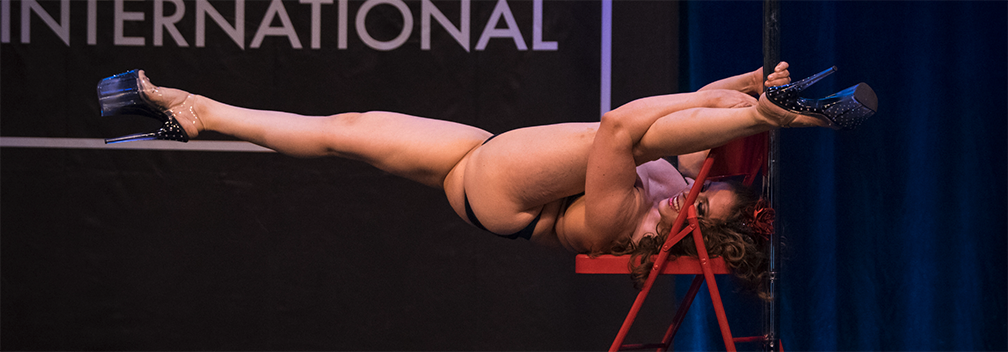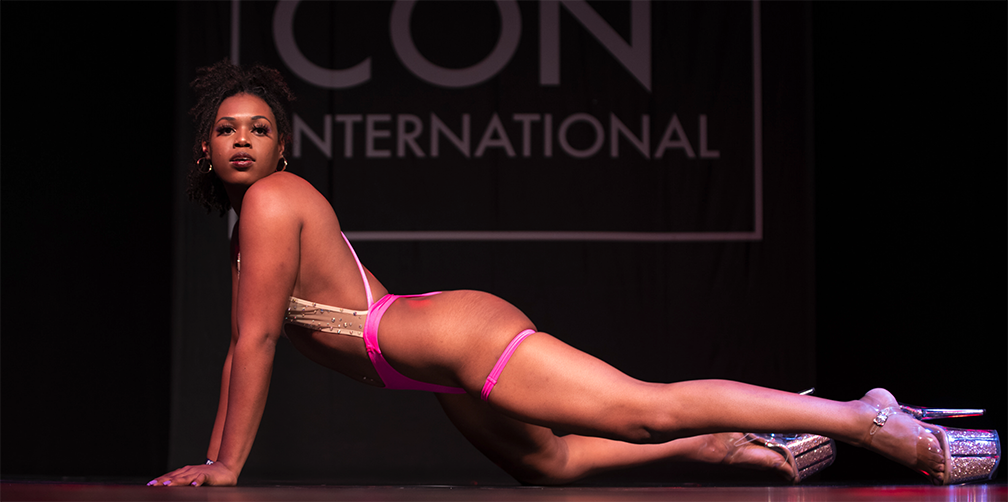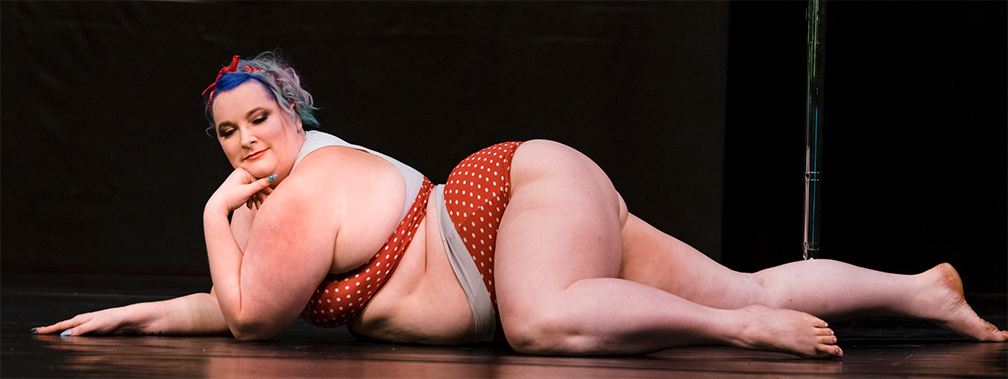Get Your Booty to the Poll (GYBTTP) was a 2020 campaign that used pole dance…

Interview with Colleen Jolly, Author of “Mobility for Pole”
Today we’re chatting with the HBIC of PoleCon who in addition to running the event is also a pole teacher! She’s passionate about mobility and has just written a book about it.
PoleCon (PC): Thank you for chatting with us today! Will this book help me get my splits?
Colleen Jolly (CJ): Haha, that’s what everyone wants! Splits! Or backbends or whatever the newest pole move is. The book might help some people get closer to their splits but the real intended purpose of this book is to help get in touch their bodies so they can figure out what their body needs to move better and potentially get out of pain.
PC: Hmmm, that sounds like splits to us!
CJ: To be honest, that is how this started for me. I had started doing pole and some moves came over a “normal” amount of time working on them, and somethings just didn’t come at all. I watched people who started the same time as me achieve more and more moves and I got really frustrated. I started to educate myself about how the body worked and talked to a lot of professionals in the health, wellness, and movement fields to try and diagnose my issues and appreciate the unique challenges I had that maybe other people didn’t have. They had their own challenges!
PC: So, this is really personal for you?
CJ: It is. I had a motorcycle accident when I was 17 that shattered my right leg. I wasn’t a movement person before, so my goals were really just to be able to walk again without a cane. I got a corporate desk job after finishing college and when I found pole at almost 30 years old, I started to appreciate my body more and I wanted to do all the cool stuff I saw people doing in classes and online.
PC: And now you teach mobility?
CJ: Everything I learn that helps me; I immediately share with my students in case it helps them too. I started poling in 2011 and was teaching by 2014. I’ve always integrated little mobility tips and tricks into my flexibility classes and warmups. Over time, I’ve gained a reputation amongst my students that I can help them get out of pain, so I get a lot of random questions. I didn’t officially start teaching mobility classes until the pandemic. I was working with a virtual studio and one of their staff brought the idea up as a way to differentiate myself from the other teachers. That virtual studio closed so I started my own virtual classes about a year ago offering regular classes and privates focusing on mobility. Now most of my social media is mobility focused too.
PC: And then you started writing a book? Why a book?
CJ: I like books! I like long-form communication. Sometimes I feel like boiling things down to a 144-character tweet loses the nuance. Or maybe I’m just old! I also really like to understand the why things work or are supposed to work. I don’t just want the solution; I want to really understand the whole problem. I find the body really fascinating, especially only paying attention to it as an adult. I’ve been disconnected from my body for a long time.
PC: Can you tell us more about what’s in the book?
CJ: It’s definitely structured as something that you read from the beginning to the end, at least for the first half. Everything builds on everything else. To help keep it as practical as possible, I’ve simplified a lot of technical material and added a bunch of “try now” activities that help reinforce the content. I’ve also put in chapter summaries and included videos of all the movements so people can read the content, watch the content, and listen to the content to try to capture as many learning styles as possible. The second half of the book are movement programs. So, if you didn’t read anything and didn’t personalize anything about your mobility you can still do the programs and you’ll receive some benefits from doing that.
PC: Not to be rude but are you qualified to share this kind of information?
CJ: Totally not rude! I want people to question the information they receive – in print, online, and in class! Not everything will work for everyone and if it hurts you, you should stop. I’m certified in a lot of movement modalities but I’m not a physical therapist, a physio, or a doctor. To make sure I wasn’t just “making stuff up” I had the book reviewed by a physical therapist – Dr. Angie Prescott from ACRO PT who has taught workshops at several PoleCons actually. She and I joke that I have a “field medic” understanding how all this stuff works, meaning, I may not have all the clinical knowledge, but I’ve seen a lot of things in practice and have gotten to test what works and what doesn’t work on real people.
PC: The book is called “Mobility for Pole” — is it just for pole dancers?
CJ: Pole dancers are my target demographic. They are the people that I know and work with most often so I feel qualified to address that population. Most of the pole dancers I work with are hobbyists or instructors whose second career is pole meaning they have the challenge of juggling day-job issues like stress and wacky body stuff along with the demands of pole training. I’ve found that pole and sitting at a desk type day job issues have a lot of similar challenges that manifest in the body. Dr. Prescott and I were chatting about this the other day and I’m paraphrasing but she quipped that pole (or other aerial) didn’t in most cases cause the pain people feel, it diagnosed it and highlighted it. Meaning, if you had tight forearm extensors from typing on your phone or at your desk for hours every day for decades, that wrist pain didn’t start from learning split grip. It started before that but the load wasn’t enough for you to notice. Or in my case, I just didn’t think my body could move in the ways that other bodies could because I wasn’t a movement person my whole life. For me at least, it was more a case of I hadn’t tried in a concerted way working with all the compensations my body had built up over time doing things I unintentionally asked it to do. So the short answer is, everyone can get something out of this book!
PC: That was a long answer! So how we can get this book?
CJ: Preorders are open now until September 2. After that, I close preorders and send the final version of the book to print. I’ll send out any physical books and ebooks on October 2. Ebooks will arrive immediately; physical books depend on the postal service! After October 2, I’ll be selling the books at a slightly higher rate than the preorder price through my website and Amazon. Get your preorder copy at this link.
Thank you so much for chatting with us about this! We’re interested to learn more about why mobility matters to pole dancers (and everyone else) and how to improve it. We’re really excited that it might help us improve our splits too! LOL
Latest posts by Colleen (see all)
- PoleCon Hub Page: MORE Black Voices - June 13, 2025
- PoleCon 2025: Recap - June 4, 2025
- Interview with New PoleCon Instructor: Melonsl - May 9, 2025


